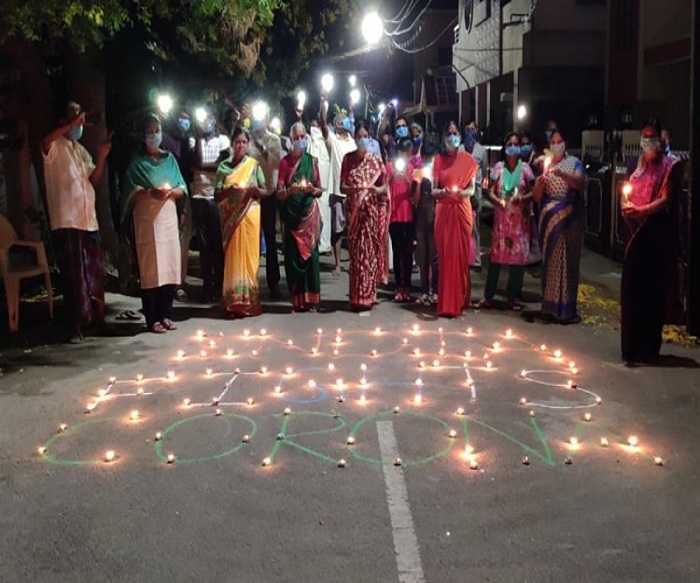ONCE AGAIN
| Date :07-Apr-2020 |

INDIA has proved once again its unity and solidarity in the fight against coronavirus. Millions of lamps were lit in millions of homes across the land at 9 p.m. on Sunday, demonstrating to the world a rare show of social togetherness and emotional bonding to serve a national cause. Those nine minutes reminded the nation of what it had achieved on March 22 when crores of people stood at their door-steps or balconies and clapped and clanged to demonstrate solidarity with those people who were engaged in essential services to keep the nation going despite lock-down.
The emotional import of the moment was simply beyond any one person to fathom. As lamps came alive, they brought up a Diwali-like scenario that spread glow on people’s faces. There were slogans, too, like ‘Bharat Mata Ki Jai’ occasionally. But from rooftops, from balconies, from their front-doors, people waved flashlights to one another in a celebration of a rare kind. Even after the lapse of nine minutes, countless people continued their ‘diwali’ for a long time. And then came on television screens the images national leaders lighting lamps in their respective homes, thus making the picture complete in every which the way. Both the occasions -- of clapping and now lighting of lamps -- were symbolisms all right.
But when millions of lamps came alive in homes across the land, the event crossed the line of a mere symbolism and assumed the importance of a practical message that the nation stood as one person in one of the most difficult periods the world had seen in the past several decades after the World War II. The event offered every reason for all of us to thank ourselves for that great show of togetherness, for that great faith that the lamps we brought to life had the power to kill the evil. This faith, this belief that we can dispel darkness will travel with us for a long distance. It is not possible to fathom how long and how far the current lock-down will continue.
Yet, the nation did carry a silent impression that the bad period was nearing its end. Or, in other words, the bad period could be put up with when the whole society stood together. After the 9 p.m. session of lighting of the lamps was over, most people did get an impression that coronavirus will not last long. Achieving this level of faith was the main aim of the event aimed at mending suitably India’s social psychology in just one stroke. This purpose was hugely successful as most people felt the power of togetherness and also of faith as lights came alive from corridors of power to balconies of high-rises where India’s high and mighty reside to lanes and alleys of cities and towns and villages where commoners joined the event with the sentiment of celebration.
There, of course, were some attempts by vested interests to scuttle the event by raising doubts about the sturdiness of the power system to sustain the sudden drop in power demand. There also were attempts to mount a false propaganda that the Government expected people to switch off their main power supply. But nobody fell prey to such tricks. The appeal was to switch off only lights and nothing else. So the electric gadgets and fans and airconditioners kept working while people switched off electric lights and lit small oil lamps and candles and brought out their flashlights, proving wrong all the politically-driven propaganda by vested interests.
The most important point this ‘diwali’ made was that of the nation had matured well to capture the essence of the symbolism of such a nature. Such a psychological maturity of the society is one of the truest marks of progress in terms of civilisational finesse. It is this aspect that has amazed the world as India put up a brave and successful fight against coronavirus.